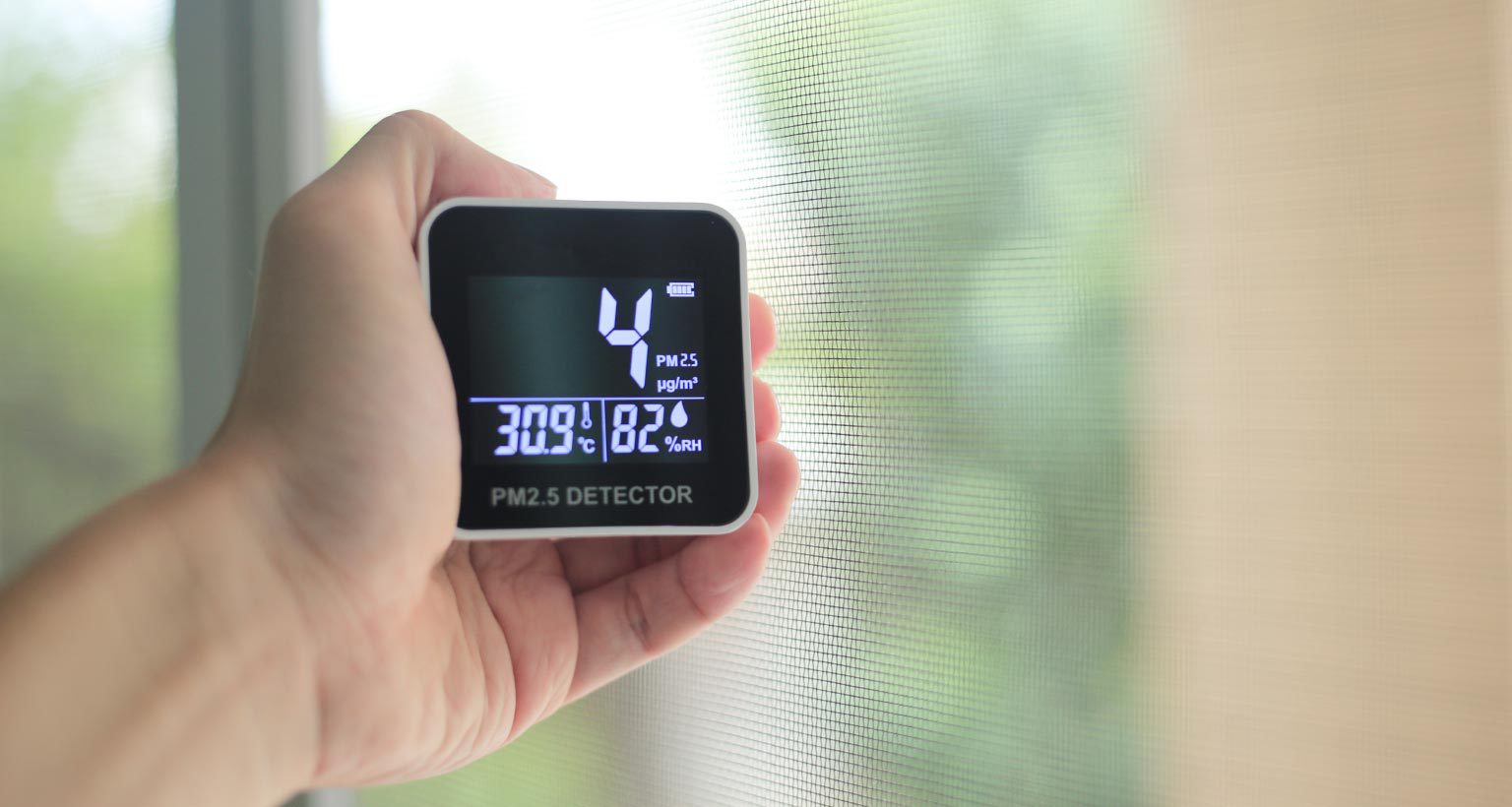What is a healthy home?

The average person in the United States spends about 90% of their time indoors—about 69% of that is in our residences. This amount has only increased with the introduction of COVID-19. In addition, those with compromised immune systems—the elderly, young children, and those with chronic illnesses—generally spend more time indoors.
Research has found that indoor air pollution and other pollutants in the homes can actually be worse than being outdoors. Considering the large amount of time Americans spend indoors, knowing how to make those spaces healthy, especially for underserved and vulnerable populations, is a public health imperative.
What makes a healthy home?
The concept of healthy homes was developed as a way to measure and monitor the safety of home environments and to make them safer both through new development and retrofitting older homes. With an understanding of what makes a healthy home, policymakers can work toward consistent standards that will improve the overall health of the community.
Here are five important methods to keep in mind as it relates to creating a healthy home environment, whether the structure is already built or under construction:
Dry environment
Wet living environments are linked to many health concerns including respiratory problems like asthma, allergic reactions to mold, lead poisoning, and slips and falls.
A wet home creates mold, which leads to mold spores. When mold or fungi release spores, these minuscule particles can easily pass through the body’s natural defenses and head directly into the lungs. The body triggers its defense system and results in inflammation in the lungs. This hinders the ability to pass oxygen into the bloodstream and narrows the airways, making it hard to breathe and get blood to the brain.
Identifying wet home environments and implementing mitigations measures that prevent the growth of mold can improve respiratory health for the home’s residents, thus creating a healthier home environment.
Pest-free
Nobody wants to live in a home with pests. They are an undesirable nuisance that can also carry disease and lead to allergic reactions and asthma.
Cockroaches, dust mites, and rodents exposure can cause skin rashes and respiratory problems. Cockroaches and rodents pick up and carry germs that spread intestinal diseases, typhoid, and other harmful illnesses if they are able to run freely around human living spaces. Pests such as rats and mice can also destroy property and their propensity for chewing can cause structural damage to electrical wires that can lead to fire.
Keeping homes free of pests prevents the spread of disease not only within that residence, but throughout a multi-unit building and in some cases, throughout the neighborhood.
Contaminant- and chemical-free
Creating a healthy home environment certainly starts with ensuring that there’s nothing contaminating and jeopardizing the effort. Contaminants like radon, lead, pesticides, asbestos, volatile organic compounds, and tobacco smoke, when inhaled, can lead to many serious health concerns, including lung cancer and neurological conditions. It has taken years to begin to understand the harmful effects of these chemicals, partly because the onset of some of the side-effects takes years to play out.
Many local public health offices have information on how to test for these contaminants, or in many cases, homeowners can simply purchase tests for some of these contaminants at the local hardware store.
Good airflow helps with overall home air quality
Home air quality is a big concern and is easy to overlook. Research into the spread of COVID-19 has shed light on the importance of maintaining good airflow within buildings. Good airflow ensures cleaner home air quality is being filtered throughout a dwelling, helping to keep the home dry and flushing out airborne chemicals. Having good air circulation can also help keep temperatures within a dwelling at a manageable level during warm days. Airflow can be improved with fans, HVAC systems, and even open windows.
Reduced risk of injury
A healthy home is also one that is well-maintained to reduce the potential for slips and falls. The U.S. Centers for Disease Control reports that falls are the leading cause of injury-related death among adults over 65 and costs about $754 million annually. Not all falls result in death, but falls amongst the elderly are very costly. Each year, medical costs related to non-fatal falls total more than $50 billion.
Maintaining stairs and railings, proper flooring, and dry conditions will all help prevent slips and falls and is a solid proactive measure in creating a healthy home environment.
How the surrounding environment affects health indoors
Jonathan I. Levy ScD, a professor of Environmental Health at Boston University School of Public Health, has focused his research on urban environmental exposure and health risk modeling. In this video, he discusses how neighborhood factors can also impact how healthy a home is indoors in three distinct ways:
Consideration of what others are doing
Keeping your own home healthy is a priority for your health, however, it should also be a priority for protecting those around you. Second-hand cigarette smoke, water damage from leaking faucets, toilets and appliances, and the spread of pests can all impact people within a multi-unit building, causing unsafe and unhealthy conditions.
Homes should be good for residents and the larger population
Homes that are energy efficient and have good airflow to bolster home air quality, require fewer fossil fuels to keep warm in the winter and cool in the summer. This not only means good home air quality inside the home, but also less air pollution in the air we all breathe outside.
What makes a home healthy depends on where it’s located.
Homes in neighborhoods that are walkable and near public transportation make it more likely people will use cars less and walk more, increasing physical activity. Homes in neighborhoods with trees next to homes and lining the streets allow for better temperature regulation inside the homes and have been shown to reduce stress, too.
Creating a healthy home environment is about much more than just an individual’s residence. It’s also about developing policies, building codes, housing designs, HVAC standards, and other policies that are mindful of human health. To ensure better environments indoors, building healthy homes must involve developers, residents, landlords, as well as the government subsidizing best practices and providing tax credits to those who take steps to create healthier living environments.
For more information about the work being done at BUSPH, get in touch, or visit ideahub.org.
Jonathan I. Levy ScD is a professor of Environmental Health at Boston University School of Public Health whose research centers on urban environmental exposure and health risk modeling. He also co-directs the Center for Research on Environmental and Social Stressors in Housing Across the Life Course (CRESSH), which aims to connect environmental epidemiology, exposure science, and health disparities modeling with a focus on the indoor environment and community-engaged research.




